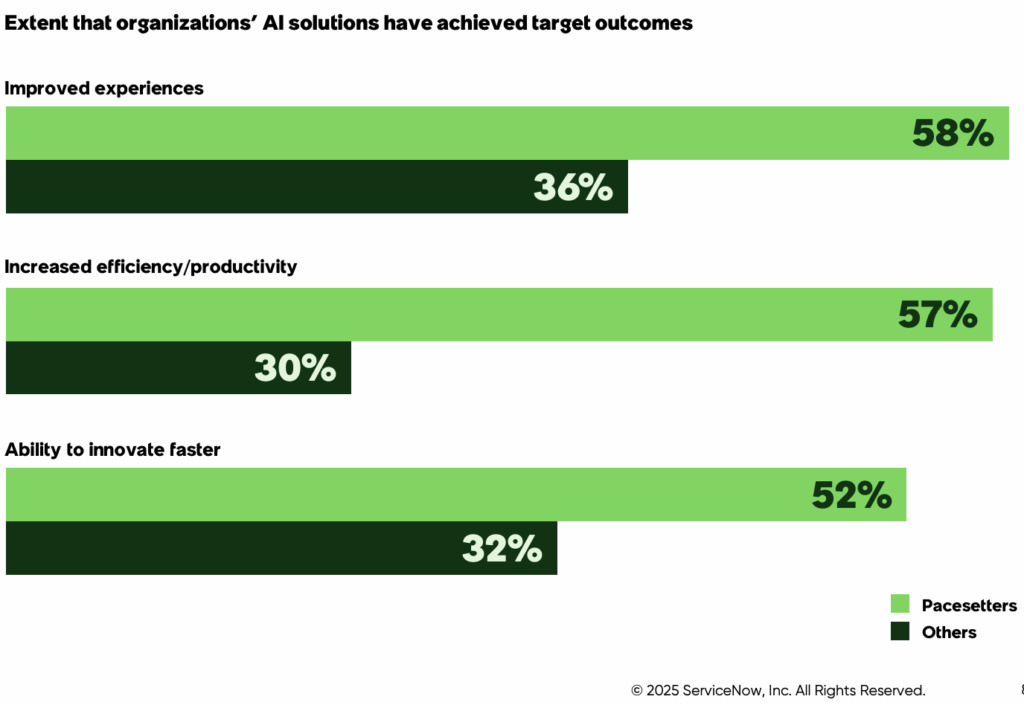How mature is your AI effort?

It turns out that in spite of the hype, most companies are not all in on AI yet. While there’s a huge dose of FOMO out there, the Economist reported this week that just 10% of firms are using AI in a meaningful way (whatever that means).
I’ve seen figures as high as 25%, but you get the idea: you may think everyone’s using AI, but apparently they’re not. They just like to talk a good game with 45% of the S&P 500 execs talking about AI in earnings calls in the first quarter this year according to that same Economist article. The gap between these two statistics is hard to miss.
That’s why it may seem, ahem, premature to be discussing your company’s AI maturity, but it’s a concept I came across in a couple of different places this week. In both instances, the implication was clear: the more mature your approach to AI, the more successful you are likely to be as an organization (even if most companies aren’t close to getting there yet).
Splunk defines a maturity model as a way to “measure an organization's capabilities over time: They provide a structured framework to assess progress, identify gaps and guide improvements in areas like IT, security or business operations.” In this case, it’s determining where your organization sits on the AI maturity spectrum. That requires some sort of framework.
Where are you now?
Consultants typically help companies understand how to get from Point A to Point B when a new technology comes along. Change is never easy inside large organizations and AI requires a level of change we may never have experienced previously. That’s why finding a way to measure is helpful.
Brian Solis, head of global innovation at ServiceNow and author of eight books, says it’s not so much the complexity of the technology itself, but the age-old organizational problems that have held companies back through every technological and business shift.
“Leadership has consistently tried to put all of these massive shifts and events into the box of ‘business as usual’ and AI cannot work in the box of business as usual. It really requires actual transformation, mostly from a data standpoint, which then requires shifts from a silo and operational standpoint,” Solis told FastForward in a recent interview. That means breaking down information silos and finding ways to put AI to work to improve your company’s operations.

Ray Wang, founder and principal analyst at Constellation Research, published a blog post this week that is a good attempt at building a maturity model for AI. In Wang’s estimation, AI Luddites are at one end of the spectrum with AI Exponentials at the other end. It’s worth a look as a mental model as you try to assess your own company’s AI efforts.
AI Luddite is pretty clear. You don’t believe in the technology and you have no intention of adopting it, while AI Exponentials represent an ideal state that includes having a mature data model, being fully engaged with agentic AI and having what he calls an “excessive” investment in AI. The end goal here is to create an AI-fueled company with a strong digital workforce, the minimum number of human employees and the highest amount of revenue.
But fear not because you don’t go from one extreme to the other in one fell swoop. He identifies three in-between states: AI Followers, AI Literate and AI-first. To be clear, I don’t see any company anywhere close to being exponential. Right now the agentic piece is still very much a work in progress, as we have discussed frequently in this space.
So once again we find ourselves talking about aspiration versus current reality. With just 10% of companies meaningfully using AI today, that leaves a long way to go to reach Wang’s AI ideal.
Looking at the current state
To get a sense of the current state of affairs, I looked at the ServiceNow Enterprise AI Maturity Index report published in conjunction with Oxford Economics in May. The purpose of this report is to measure where public sector and private enterprise organizations stand on their AI journeys.
This is the second such report, so ServiceNow has a body of data to compare against, and what they found was surprising. Instead of the maturity index rising, they found it dropped off pretty sharply. They attributed this to the speed of change, making it difficult for large organizations to react to the pace and falling behind instead of moving ahead.

It’s not like it’s slowing down. As we saw this week, the target just keeps moving. This week’s announcements alone included an update to Claude, the release of OpenAI’s open-weight models and the long-awaited release of ChatGPT-5. That’s just one week. It’s no wonder large companies can’t keep up with it. None of us can.
What’s holding companies back? Well, besides the pace of change, ServiceNow identified measurement, governance and talent problems. As for the latter, when you have Meta offering mega compensation packages to anyone with AI expertise, what are mere mortal companies to do when it comes to attracting the finite supply of workers who can help accelerate the move up the AI maturity curve.
None of this is to say that this is impossible. The report found that in spite of these big obstacles, companies they call “pace setters,” defined as “an elite cohort of companies that are leading the pack across all dimensions of AI maturity,” are seeing much better results than typical enterprises, as the chart below illustrates:

As ServiceNow pointed out, even the most advanced enterprises are still in the early stages of AI transformation, which means you still have time to figure this out. You should, however, begin assessing where you currently stand in order to set clear goals for the future. Because if AI is the game changer it’s purported to be, doing nothing is not a viable option.
~Ron
Featured photo by Steve Johnson on Unsplash





